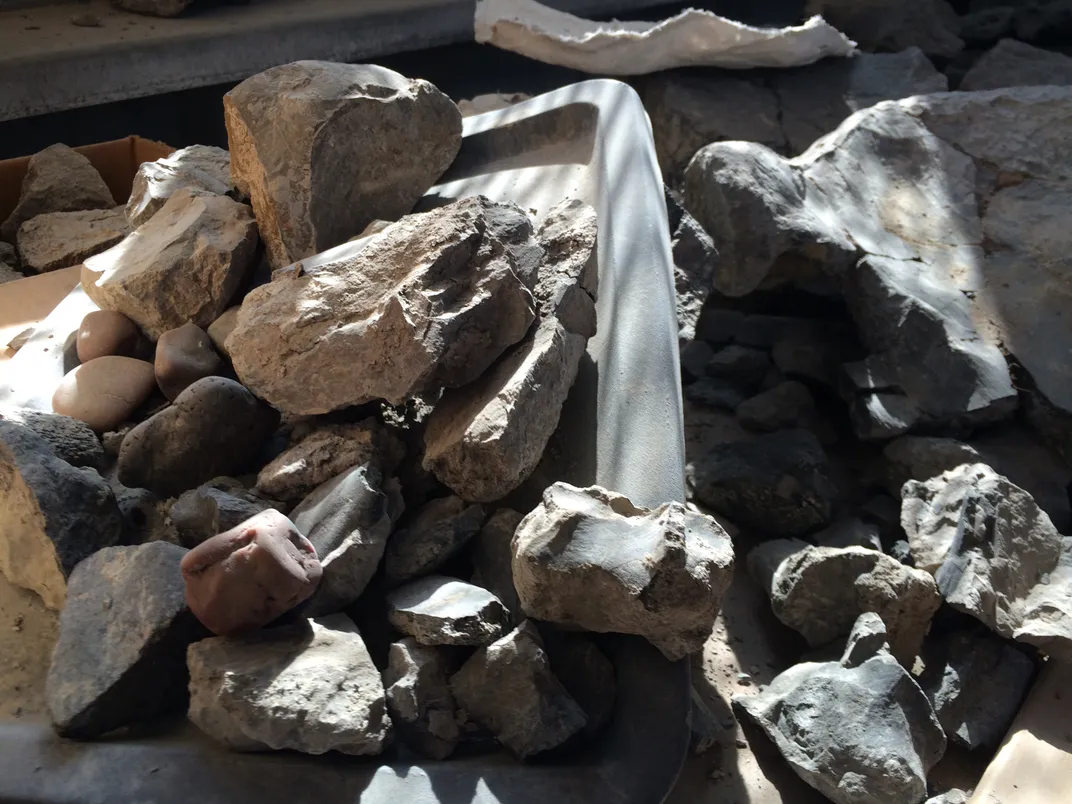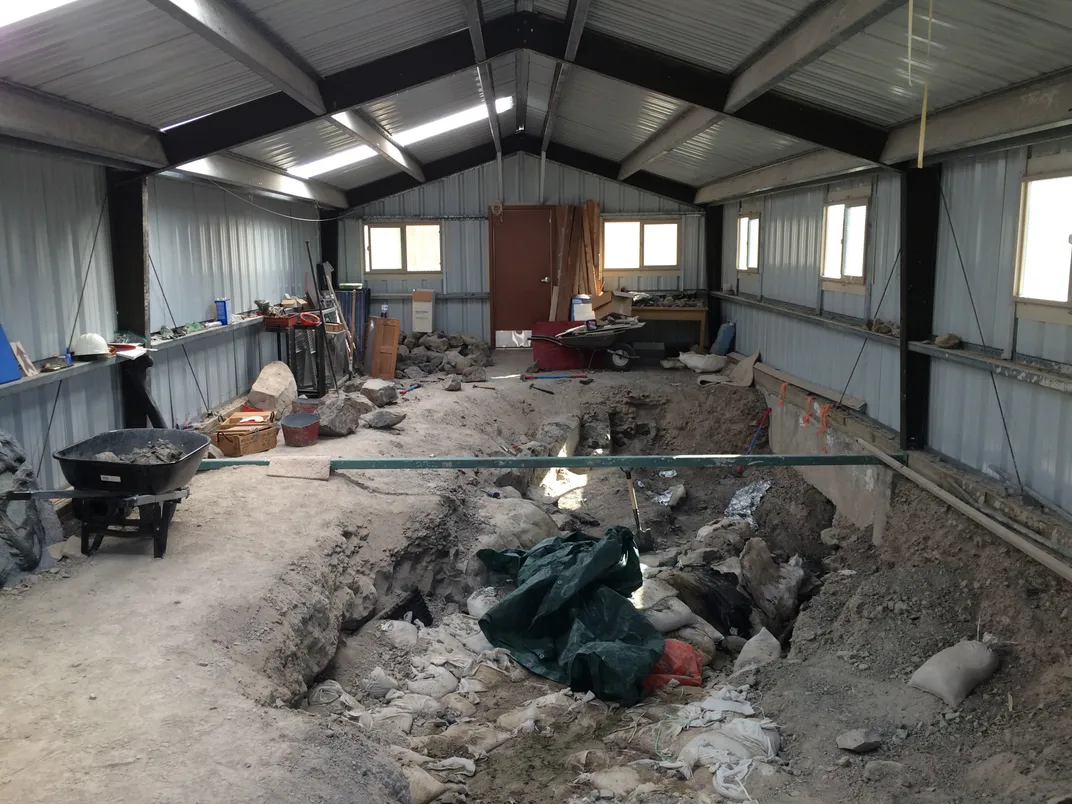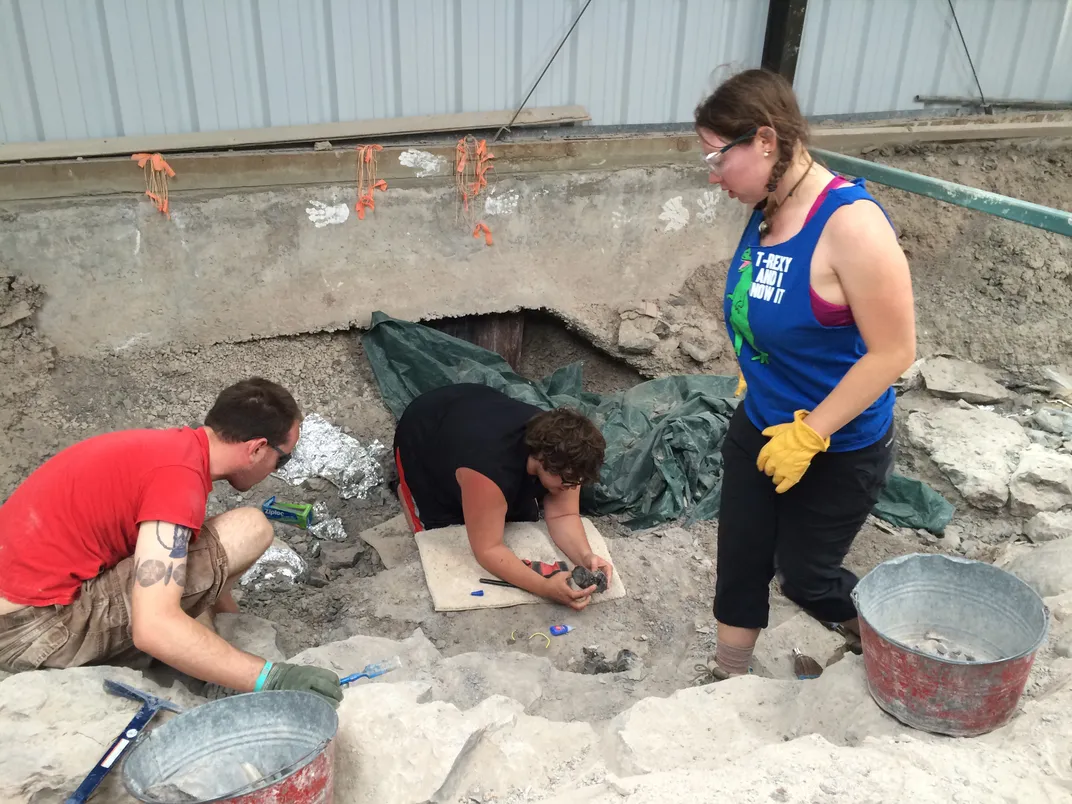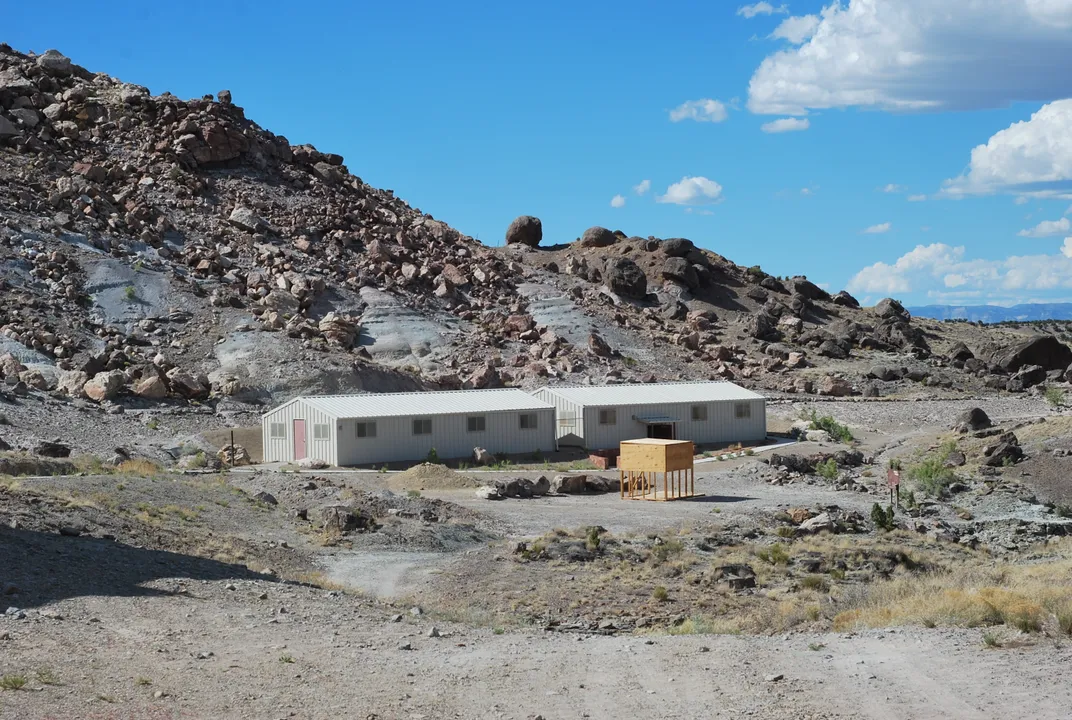What Killed the Dinosaurs in Utah’s Giant Jurassic Death Pit?
Paleontologists are gathering evidence that may help crack the 148-million-year-old mystery, including signs of poisoned predators
/https://tf-cmsv2-smithsonianmag-media.s3.amazonaws.com/filer/d3/c2/d3c266d9-7487-4082-b6de-17d6db732078/price_cldw_hogle_zoo_june_6_2012_015.jpg)
Utah is dinosaur country—so much so that the state has a scenic byway system called the Dinosaur Diamond that connects ancient final resting places across the desert. But among the sites holding preserved tracks and dusty fossils, one boneyard stands out as a 148-million-year-old mystery: the Cleveland-Lloyd Dinosaur Quarry.
This national landmark, about an hour’s drive southeast from the town of Price, boasts one of the densest concentrations of Jurassic dinosaur fossils in the world. Oddly, the Jurassic jumble is packed with a particular species of wicked-clawed carnivore, an assemblage that has puzzled scientists for decades. What happened in ancient Utah to bring together this convergence of predators, and what could have killed the carnivores?
Now, a team of paleontologists from several institutions may have found some unexpected clues that would overturn the leading theory for explaining this dinosaur death pit. And like many great murder mysteries, the tale seems to involve a dash of poison.
No one knows who first stumbled upon the carnivore-rich quarry. The bonebed was already well known to local ranchers when the University of Utah undertook the first formal excavation in 1928, carting off more than 500 bones. A decade later, local lad William Lee Stokes told his professors about the site when he went east to attend Princeton University. The Ivy Leaguers dug around the site in the summers of 1939 to 1941, with Stokes eventually becoming the chief authority on the seemingly inexhaustible bone bed. Scientists from other institutions came and went over the years, all puzzled by the unusual fossil haul.
As Stokes and succeeding generations of paleontologists hammered into the quarry, they found that more than 75 percent of the bones extracted from the gray stone belonged to Allosaurus fragilis—a lithe predator that could grow upward of 30 feet in length, equipped by evolution with three wickedly curved claws on each hand and a mouth brimming with serrated teeth. Other predators turned up at the quarry, too—including the previously unknown Marshosaurus and Stokesosaurus – but none numbered anywhere close to the overwhelming abundance of Allosaurus.
The initial explanation for the skewed statistics seems simple: the site must have been a predator trap. Around 148 million years ago, in the warmth of the Jurassic dry season, an unwary Stegosaurus or similar source of meat must have blundered into the muck of a drying lake bed in search of a drink. All the tonnage pressed the dinosaur’s feet into the mire, and, exhausted from effort and dehydration, the animal quickly died. If the struggling dinosaur's cries didn’t attract carnivores, then the postmortem smell surely did. But the voracious Allosaurus would have been trapped just like their last supper, and the trap would refresh itself with new bait as dinosaur after dinosaur wandered into the sticky pit.
As more researchers picked at the quarry, though, the predator trap hypothesis began making less sense. Dissenting paleontologists and geologists have pointed out that there was nothing at this site to trap the predators—the rocks hold no sign of asphalt or other substance sticky enough to ensnare dinosaurian feet. So far, alternative explanations have included severe drought, bodies floating in from elsewhere, poisoned water and more. All these options divide the mystery into two parts: how did the dinosaurs become buried here, and why does Allosaurus so greatly outnumber all others?
The answers to these questions rest with geology. Dinosaur bones can tell us a great deal about individual animals—size, age, health and so on—but the context of their stony burial is the most essential part of the Cleveland-Lloyd story. The rock itself, as well as the pattern in which the individual bones were laid out, hold clues to what the ancient environment was like and what may have brought this fossil assemblage together.
To reconstruct what happened, University of Wisconsin, Oshkosh paleontologist Joseph Peterson and his field crew have been engaged in years of backbreaking labor. “There’s really no place in the world that’s like Jurassic Utah,” Peterson says, so the scientists have to reconstruct that lost world from bits and pieces.
While the Bureau of Land Management has done a great job protecting the site, Peterson says, there are some challenges inherent to the quarry. The exposed bone bed is currently shielded from the elements by a pair of buildings. The north quarry building is generally in good shape, in part because it is open to the public. But the south building has been used as storage space out of necessity and has become the perfect home for packrats and gopher snakes. Sweeping out the rat poop is usually the first task of the field season.
Also, even though most excavations here have been scientific, at unrecorded times in the past, some bones have been removed without any of the essential geologic information about how they were situated. Many of these chunks were placed around the quarry buildings or piled in the corner in what Peterson jokingly calls the “Table of Mystery and Despair”.
For the past four years, Peterson's team has spent a week or two at a time cleaning up the quarries and removing literal tons of limestone to expose more of the bone layer, so that the fossil bed can be mapped in detail for the first time. The team has been using a technique called photogrammetry—making 3-D photographic maps—so that changes to the quarry can be updated yearly with a few snaps of a camera. By studying these models, Peterson hopes to see whether the dinosaurs at the site were felled by a single catastrophe or if the bodies accumulated over time. “Regardless of what these results show us,” Peterson says, “it’s supplying a huge piece of this puzzle.”
The team is also gathering other lines of evidence. In addition to studies of the quarry’s geologic chemistry, they’re running some experiments on what happens to theropod carcasses when they’re soaked in the type of ancient environment that Cleveland-Lloyd represents. In absence of any living Allosaurus, the scientists are using modern dinosaurs, aka birds.
“My approach to the quarry is the same as a crime scene or archaeological site—leave no stone unturned,” Peterson says.
All the effort is starting to clear up the complex and sometimes seemingly contradictory signals about what happened at Cleveland-Lloyd. So far, the new results “support previous hypotheses regarding bloat and float as well as a toxic water source for the quarry,” says Indiana University of Pennsylvania geologist Jonathan Warnock. The full details are awaiting scientific publication, but the researchers are zeroing in on how poisoned water could have killed the dinosaurs and the way those bodies fell apart to make the pick-up-sticks accumulation embedded in Jurassic stone.
Not that the story of Cleveland-Lloyd is close to finished. Much of the bone bed remains beneath the rock, extending into the hills behind the quarry buildings. And just this summer the team exposed a fresh portion of the quarry surface that will be painstakingly excavated next year, including evidence of the 48th Allosaurus to be uncovered.
Even though Cleveland-Lloyd is a unique Allosaurus accumulation, Peterson expects that studying the site will yield more general facts about what happened to Jurassic dinosaurs between deaths and their discovery by paleontologists. The Utah boneyard a place not just to marvel at long-gone saurians, but also to reconstruct what the Jurassic world was truly like.
/https://tf-cmsv2-smithsonianmag-media.s3.amazonaws.com/accounts/headshot/RileyBlack.png)




/https://tf-cmsv2-smithsonianmag-media.s3.amazonaws.com/accounts/headshot/RileyBlack.png)